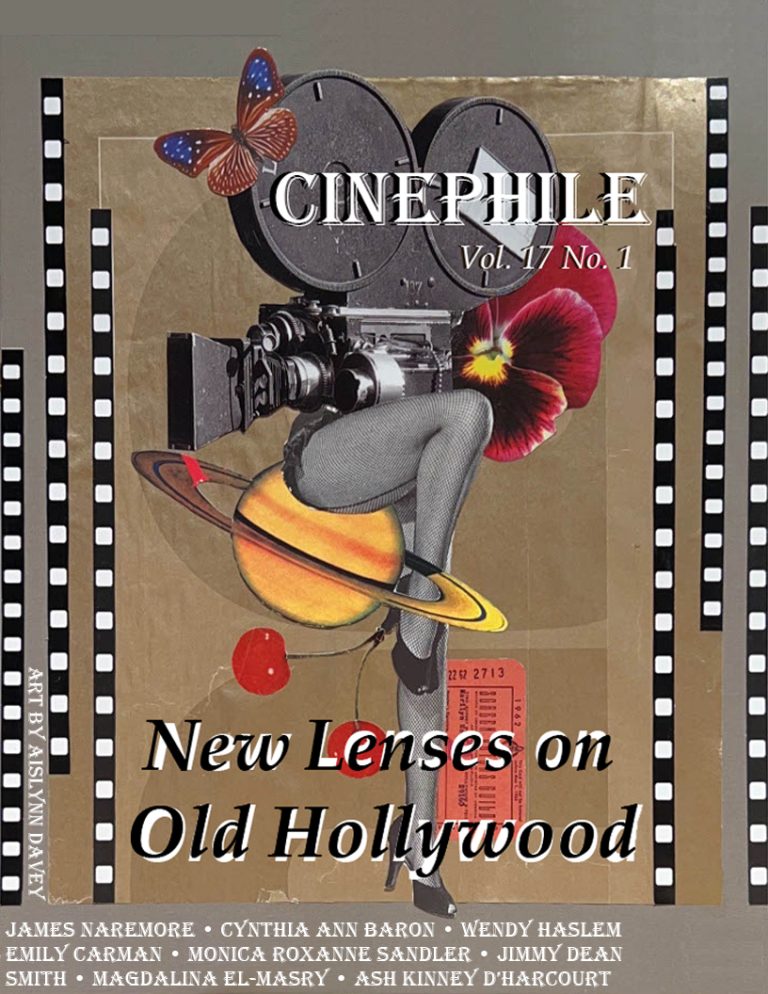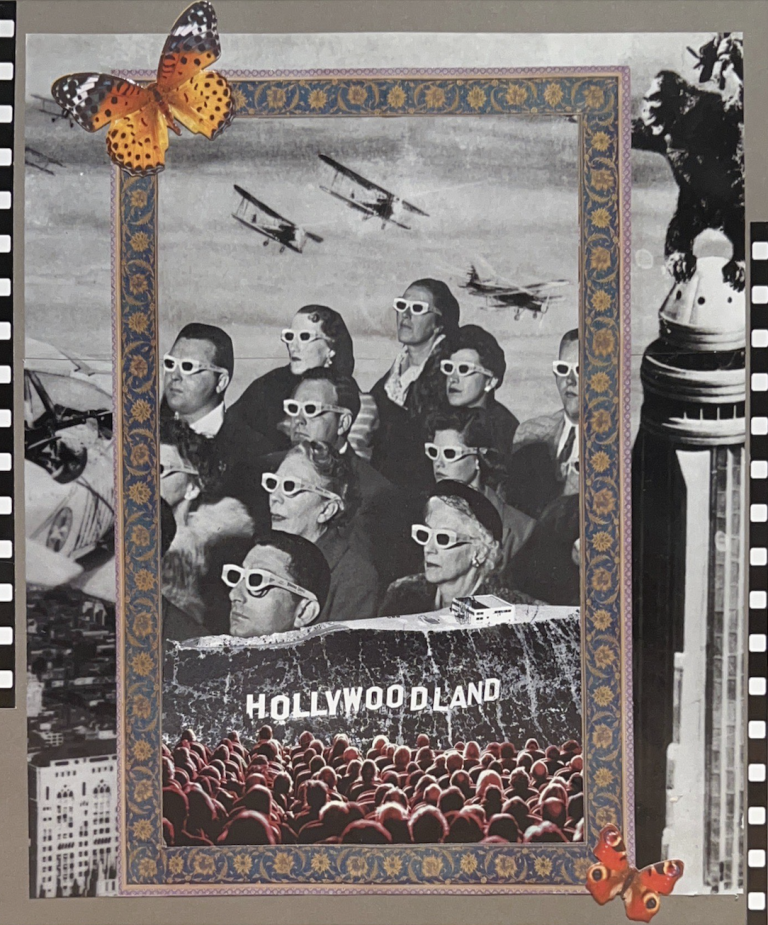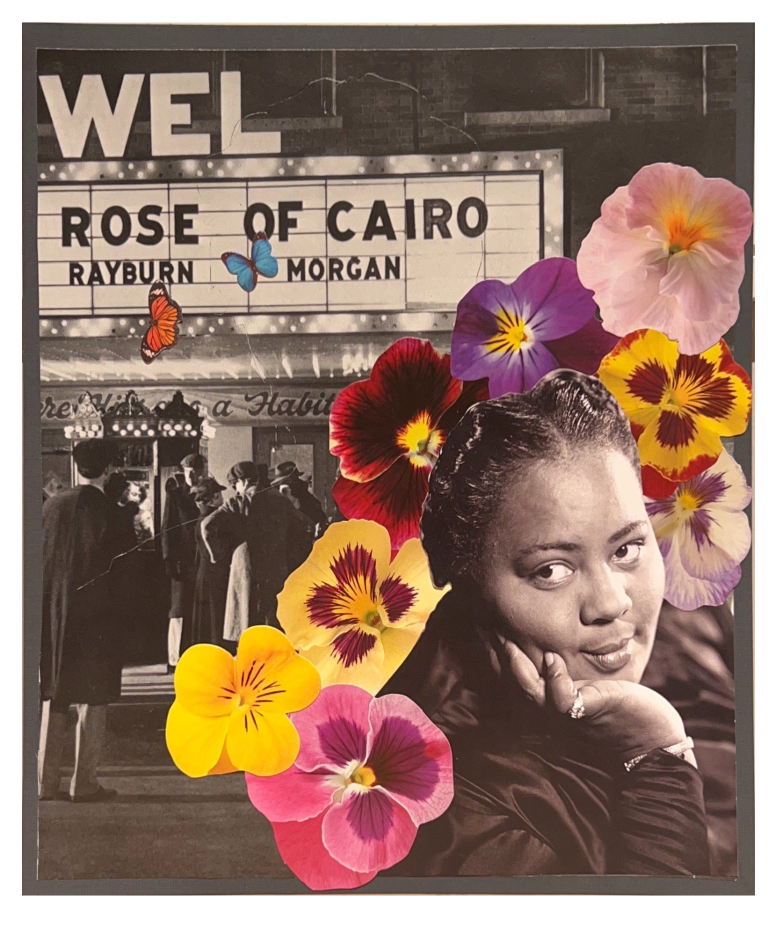

Cover of Cinephile Vol. 17 No.1. Artwork by Aislynn Davey.
Academia fosters the passions of many students and brings projects of immense calibre to fruition. One notable project under the Theatre and Film Department at UBC is the Cinephile Film Journal. In circulation since 2005, Cinephile spotlights cinema around the globe in diverse contexts. Cinephile’s outgoing Editor-in-Chief Tamar Hanstke began to brainstorm what she could leave behind as her Cinephile legacy; thus came the Cinephile archive redesign. Tamar speaks with us about what the journal stands for and the benefits students can gain through it, as well as the redesign.


What is the relevance of Cinephile as a publication?
“Cinephile is a cutting-edge research journal that may not have the prestige of larger, formally peer-reviewed scholarly publications, but the relatively short turnaround time between the call-for-papers and the publication of the issue (generally 6 months) allows for novel research, particularly that performed by graduate students and early-career academics, to be released at the moment when it is most relevant.”
Can you elaborate on what your position with Cinephile entails?
“Each year, the 2nd-year MA students in Cinema and Media Studies are required to complete 3 of their required course credits by creating an issue of Cinephile. I was the only MA student admitted to the program in 2021, so I am the sole editor-in-chief this year.
As editor, I chose a theme for my issue; wrote and distributed a call-for-papers; corresponded with interested authors; solicited a “star scholar” to contribute a piece to the issue, as per Cinephile tradition; distributed the submitted essays to my editorial board for board-review (my board consists of the current cohort of 1st-year MA students, and a few generous volunteer PhD students); distributed summaries of revision requests to the accepted authors; commissioned an artist to do the artwork for the issue; and designed the PDF and print-ready copy of the issue using InDesign.
Currently, I am coordinating the creation and release of the print issue, at which point it will be time for me to pass the journal along to the next group of 2nd-year MA students!”


Graphics for Cinephile Vol. 17 No.1. Artwork by Aislynn Davey.
As the journal grows with each volume, Tamar has utilized the Cinephile archive redesign to provide a better experience for Cinephile’s readers. Tamar gave us an inside look at the website redesign and what is to come in the near future.
What inspired you to take on the task of redesigning the Cinephile website?
“While planning my transfer to UBC to do my BA in Film Studies back in 2018/2019, I would always see the cover of the current Cinephile issue and be so impressed that the department had its own film journal.
Upon entering the program, I was saddened to discover that, while the MA students in the program pour their hearts and souls into their issues, their hard work pretty much disappears as soon as the initial wave of publication announcements dies down. I made it my goal to change this and shed light on all the incredible work done by both my predecessors in the program, and all the authors and artists who have contributed their work to the journal over the past 18 years.”
Can you walk us through the changes to the online journal and your intention behind them?
“Cinephile is currently hosted on cinephile.ca, a WordPress website. While aesthetically pleasing, WordPress leaves a lot to be desired in terms of hosting journal issues. At present, the majority of the journal’s archives are only available to view via massive PDF files that must be downloaded by the reader, and many of the issues have no table of contents listed on the website, requiring the reader to download a file based only on the title and cover artwork. This also means that students and academics doing general research on, for example, film sound or queer cinema will never find relevant articles from Cinephile–of which there are many!–unless they have prior knowledge of the journal and are willing to sift through the archive on the off-chance they can find an article that is useful to them.
Going forward, the new Open Journal Source hosting will be the primary place for readers to access Cinephile’s articles, each of which is cataloged with an abstract, keywords, DOI, and author information, and is available for download as an individual PDF. The site also has a search function allowing researchers to find the specific topics they are interested in.”
What benefits do you hope your readers will reap from the user-friendly archive redesign?
“I hope readers find it much easier to explore the back catalogue of Cinephile, as there is a treasure trove of interesting articles that I believe could be of benefit to research currently being conducted in our field, ranging from film sound studies, to television studies, to adaptation studies, and many more. I also hope readers enjoy getting to see the incredible interior artwork that has been commissioned for so many issues of Cinephile, now easily viewable on the individual pages for each issue and article.“


Graphics for Cinephile Vol. 17 No.1. Artwork by Aislynn Davey.
Tamar’s pursuits with Cinephile have had a positive impact on the journal as well as her career path. When asked what the future of Cinephile looks like to her, Tamar explains that she “[believes] Cinephile has always been a great journal, but one not nearly enough people in the film studies field are aware of.” Tamar’s passion project of redesigning the website should “only add to the journal’s already-solid reputation, and hopefully allow it to be a more frequently utilized source of research in the future.”
As she prepares to start her PhD at the University of Toronto this September, Tamar looks back on her time as Editor in Chief as “an invaluable opportunity to try out a fruitful alt-academic career.” The newest issue “New Lenses on Old Hollywood” uncovers the connections between historical films of the Golden Age and modern-day experiences of Cinema Studies students. Tamar hopes that this issue will resonate with readers as it “shows us that history continues to influence our contemporary societies in unexpected ways, particularly when (film) stars are involved, continuing to glow brightly above our heads for generations untold.”
Thank you Tamar for taking us through the ins and outs of Cinephile!
You can now access archived editions through the Archives or Search tabs here. The newest edition of Cinephile is available to readers now as well!


